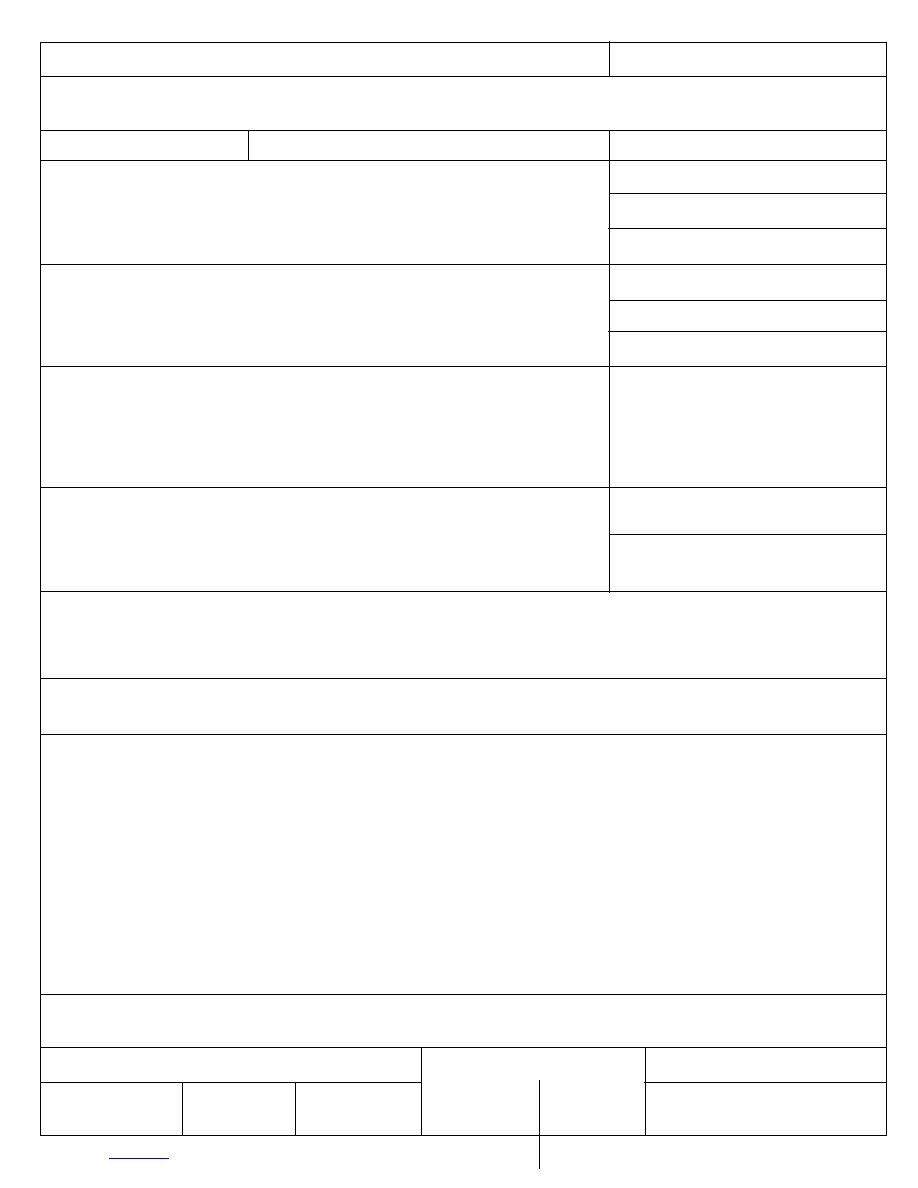
Form Approved
REPORT DOCUMENTATION PAGE
OMB No. 0704-0188
Public reporting burden for this collection of information is estimated to average 1 hour per response, including the time for reviewing instructions, searching existing data sources, gathering and maintaining the
data needed, and completing and reviewing this collection of information. Send comments regarding this burden estimate or any other aspect of this collection of information, including suggestions for reducing
this burden to Department of Defense, Washington Headquarters Services, Directorate for Information Operations and Reports (0704-0188), 1215 Jefferson Davis Highway, Suite 1204, Arlington, VA 22202-4302.
Respondents should be aware that notwithstanding any other provision of law, no person shall be subject to any penalty for failing to comply with a collection of information if it does not display a currently valid
OMB control number. PLEASE DO NOT RETURN YOUR FORM TO THE ABOVE ADDRESS.
1. REPORT DATE (DD-MM-YY)
3. DATES COVERED (From - To)
2. REPORT TYPE
September 2000
Technical Report
4. TITLE AND SUBTITLE
5a. CONTRACT NUMBER
5b. GRANT NUMBER
A Review of the Thermodynamics of Frost Heave
5c. PROGRAM ELEMENT NUMBER
6. AUTHOR(S)
5d. PROJECT NUMBER
5e. TASK NUMBER
Karen Henry
5f. WORK UNIT NUMBER
AT24-SP-006
7. PERFORMING ORGANIZATION NAME(S) AND ADDRESS(ES)
8. PERFORMING ORGANIZATION REPORT
NUMBER
U.S. Army Engineer Research and Development Center
Cold Regions Research and Engineering Laboratory
72 Lyme Road
ERDC/CRREL TR-00-16
Hanover, New Hampshire 03755-1290
9. SPONSORING/MONITORING AGENCY NAME(S) AND ADDRESS(ES)
10. SPONSOR / MONITOR'S ACRONYM(S)
11. SPONSOR / MONITOR'S REPORT
NUMBER(S)
12. DISTRIBUTION / AVAILABILITY STATEMENT
Approved for public release; distribution is unlimited.
Available from NTIS, Springfield, Virginia 22161.
13. SUPPLEMENTARY NOTES
14. ABSTRACT
Thermodynamic equilibrium requires a balance of thermal, mechanical, and chemical forces. The general equation for mechanical
equilibrium between two phases describes capillary effects in porous materials, important in both unsaturated water flow and in under-
standing ice/water interfaces in freezing soil. The GibbsDuhem equation, which relates changes in chemical potential of a substance to
changes in temperature, pressure, and presence of other chemicals, is of critical importance in understanding the flow of water in
freezing soils. Osmotic pressure, related to the chemical potential of the substance, is useful in formulating expressions for total soil
water pressure because soil water contains solutes, and the influence of soil particle surfaces can be "approximated" as solutes. It is the
gradient in the total soil water pressure that drives flow to the freezing front in soils. The generalized Clapeyron equation, based on the
thermodynamic equilibrium of ice and water in soils (e.g., Loch 1978), is utilized by the thermodynamically based models of Miller
(1978) and Gilpin (1980). In these models Fourier's Law and Darcy's Law describe heat and mass transfer in the frozen fringe, respec-
tively, and mass flow and heat flow are coupled by one equation that describes heat transfer in the frozen soil. Ice lenses start to grow
when the effective stress in the frozen fringe becomes zero (Miller 1978, Gilpin 1980). Once an ice lens is established, liquid water is
15. SUBJECT TERMS
Frost heave
Soil freezing
Thermodynamics
Generalized Clapeyron equation
Thermodynamic equilibrium
16. SECURITY CLASSIFICATION OF:
17. LIMITATION OF
18. NUMBER
19a. NAME OF RESPONSIBLE PERSON
OF ABSTRACT
OF PAGES
19b. TELEPHONE NUMBER (include area code)
a. REPORT
b. ABSTRACT
c. THIS PAGE
U
U
U
U
25
Standard Form 298 (Rev. 8-98)
Prescribed by ANSI Std. 239.18





 Previous Page
Previous Page
